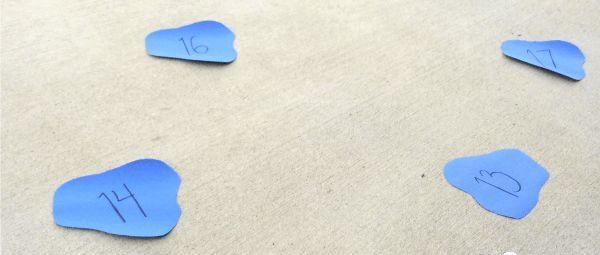Q: The child is three years old, or can only count to 10, only know a few numbers, look at the numbers alone, basically do not know the numbers, how to teach can not remember, what to do?
Why is that?
Children can't remember and can't teach, probably because the number is not strong.
But even if you can count from 1 to 100 at a very small age, it does not mean that the sense of number is very strong.
The sense of numbers is not only counting, but also including knowing numbers, counting objects one by one, knowing the total number after counting, pointing out missing numbers in a series of numbers, counting according to the law, and so on.
As long as the above is mastered before going to school, it is a reasonable range, if the child is still young, can not teach, do not have to be too anxious, the child's mathematical enlightenment can be played out from life.
You can do this
1, the number of mud pit game ——— to recognize the numbers
The first step in a good sense of number is to recognize the number.
Materials required: cardboard, brushes
How to play: Borrowing from the plot of stepping on the mud pit in "Peppa Pig", we can completely "build" a mud pit at home and recognize the numbers with the children in the jumping. (Pictured)

When little D and I played this game, I played Mother Pig, she played Page, and we gave each other instructions to jump into the pit.
Sometimes they give instructions in a row, jump continuously (the person who jumps wrong has to lie down on the ground and laugh like in the cartoon)
This is a good way to "recognize numbers while playing".
2, a number, how many clips?
Materials: Clips and uno cards (or poker cards) – learn to match one by one
How to play: First ask the child to draw a card, identify the number that appears on it, and then find the corresponding number of clips to clip on the card.
Step1: First identify the numbers on the cards, which seems simple, but I will deliberately emphasize.
step2: In the process of clamping, let the children count out one by one. "One, two, three, three clips in all. This process of counting is to strengthen the one-to-one correspondence and the principle of "total".
Children absorb new knowledge (adults too), be sure to help them learn to connect with existing knowledge, the snowball of knowledge can roll bigger and bigger.
3, digital peek-a-boo - which number is missing?
An important part of judging whether a child has feelings for numbers is whether they can sensitively identify the missing numbers in the sequence.
Ingredients: clothes clip, popsicle after eating, watercolor pen
How to play: It is recommended that you start from 10, prepare 10 eating popsicles, 10 clothes clips (write numbers), as shown below:
A number is vacated on the popsicle. Have your child find the corresponding number on the clip and clip it on a popsicle (pictured)
Advanced Gameplay: Find Odd (Even)
Points: The basics are the key, and there is no need to worry about advanced gameplay.
4. Count according to the law
Materials: paper tray, needle, watercolor pen, rope
How to play: After learning to count "one-to-one correspondence", the high-level ability of "number sense" is to count according to a certain law, such as "2, 4, 6, 8, 10", such as "5, 10, 15, 20".
We can first determine the law, such as "multiples of 2", and then punch holes in the paper tray first, and randomly write the number of multiples of 2 next to each hole.
After helping the child find the starting point, you can guide the child to thread the needle according to the law of the number sequence.
Of course, if you are not yet at the right age, this game can still be played, that is, back to the basic numbering and recognition of the ability to exercise (the process of needle and lead can also exercise fine motor exercises).